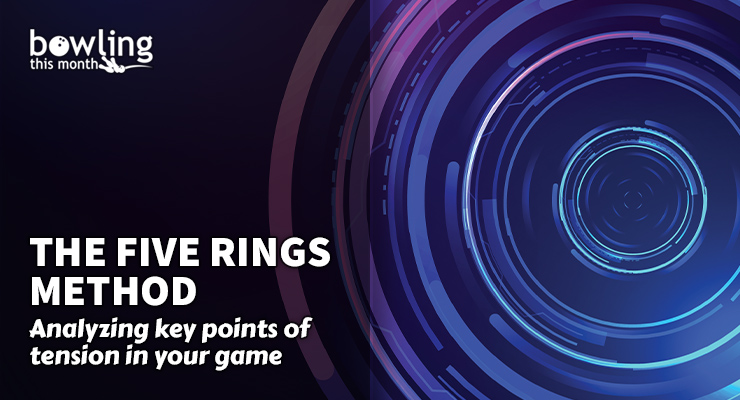Article Contents
- 1. A typical approach
- 2. Theory of the Rings
- 2.1. The ankle
- 2.2. The knee
- 2.3. The hips
- 2.4. The shoulders
- 2.5. The head
- 3. Examining the rings
- 3.1. Finding your tension points
- 4. Natural final body position
- 4.1. Correcting the position
- 5. Top of swing position
- 5.1. Correcting the position
- 6. Conclusion
Note: This article is only available to Bowling This Month subscribers.
In bowling, everything is connected. The direction of the ball start can affect everything from your footwork direction to the release. Your footwork can affect body position and swing direction. Nothing is independent from the rest of the game.
Trying to break big things down into small things is good in theory, but in practice, it doesn’t always work. It’s why bowlers can master a drill, but then not always translate it into their entire approach. If we try to coach and learn in a way that recognizes that we are more than the sum of the parts, then we can change how we approach the game.
In this article, we’ll examine a new way to look at the game that tries to incorporate these impacts. We need to understand that we are more than the sum of each part.
A typical approach
As mentioned in my previous article, I tend to start to analyze a bowler’s game using a “blink” method to get an overall feel for what looks good and what doesn’t. I then analyze the details, starting with the feet. This is how many coaches work, but I’d like to add a bit of a wrinkle to this process that I’ve called the Theory of the Rings.
Theory of the Rings
Using this method, we can better understand how elastic tension is causing issues in a bowler’s game by looking at the major sticking points in the system. It’s not enough to simply look at a bowler’s feet and decide that the ball-side foot needs to be placed at a different angle. Maybe the foot is positioned in the only way that it can be based on the tension created somewhere else in the bowler’s positioning, or because of the bowler’s mobility.
In this method, we examine five different areas:
- the ankle,
- the knee,
- the hips,
- the shoulders, and
- the head/neck.
We can look at each one independently, but we must also be aware of the others in order to fully understand what is going on.
The ankle
One of the most common things we look at is the position of the slide foot going into the release. Is the foot straight? We also concern ourselves with knee continuation, which really depends entirely on ankle flexion in order for the bowler’s weight to transfer ...
Already a premium member? Click here to log in.


